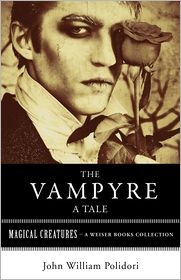 The anonymous narrator received a name - Aubrey - and a back-story. The meeting with the strange gentleman came not in a university, but in a drawing room, surrounded by high class society and the implication of royalty.
The anonymous narrator received a name - Aubrey - and a back-story. The meeting with the strange gentleman came not in a university, but in a drawing room, surrounded by high class society and the implication of royalty.
But the elements were all there. Two men taking the Grand Tour was central to the narrative. The latter part of the plot hinged upon the death, and an oath not to mention it for a year.
The vampire looked and acted as an English nobleman. Lord Ruthven had the titles to prove it. He was not the decaying corpse of Eastern European legend, but recognizably that envisaged by Byron. More than that. He was Byron.
In 1816, Lady Caroline Lamb had based a character on Byron in her novel Glenarvon. In reality, she and the poet had been lovers. She was married to William Lamb at the time, but the affair was public knowledge and the scandal of the day. When he spurned her, she took her revenge in literature.
His eponymous character in Glenarvon is an immoral seducer of women. His charisma appears almost supernatural. He betrays all who encounter him, from his lovers to his country. Eventually the ghosts of the women he destroyed appear to him on a ship. He's overcome by remorse and throws himself overboard to his death.
Those who read it called it a kiss and tell Gothic novel. Byron himself was more blunt. He called it a 'f**k and publish' story.
When The Vampyre was published in 1819, no-one was in any doubt about the real life identity of the vampire. He was called Lord Ruthven. In Lamb's book, Byron's character had been called Ruthven, Lord of Glenarvon. John Polidori was hardly being subtle here.
Moreover, the tale begins with Ruthven seducing a married woman, under the scandalized gaze of the English aristocracy. He proceeded to destroy the reputation of every woman he met on the Grand Tour. Some of them lost their lives too.
By now, the gossip surrounding the real and imagined exploits of the 'mad, bad and dangerous to know' Lord Byron had reached such a crescendo, that readers may have been forgiven for believing that Byron really was vampiric. He had done (or was supposed to have done) so much that what was draining the blood of ladies beside that?
The Vampyre may have been regarded as yet another semi-biographical kiss and tell tale, but for one key fact. They all thought that Byron himself had written it.
When John Polidori dropped it off at the publishing house, he was recognized as one of Byron's associates. As he was a physician, not a writer, the not unsurprising conclusion had been drawn that Polidori was delivering a manuscript from the poet. He hadn't thought to clarify that at the time.
So the original publications of The Vampyre, in 1819, were credited as 'a tale by Lord Byron'. Polidori rushed to correct the publishers. Byron raged. Both told anyone who'd listen that the novel was by John Polidori. No-one believed them. It took years for its readership to accept that the author was John Polidori, not Lord Byron. By then, the vampire literary tradition had been born.
It was as far from the folklore of the Levant as it was possible to be. It included English aristocrats, oozing sex and seduction, destroying reputations, as well as lives. Zombie-like life-sucking corpses were replaced by cold noble men, who cut the throats of the women they attracted, then drank their blood.
The view of the vampire in the West would never be the same again.



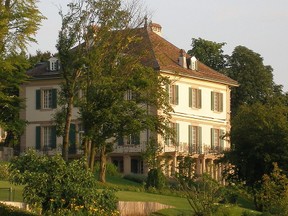 That was some party. The literary world has been eternally grateful that it rained during that week in June 1816. Two Gothic horror genres were born.
That was some party. The literary world has been eternally grateful that it rained during that week in June 1816. Two Gothic horror genres were born.




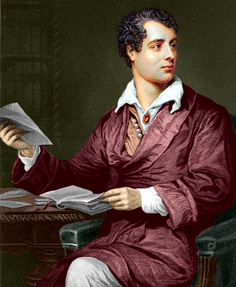 Until Byron's short, unfinished work of fiction, vampires were not like us. They haunted Slavonic, Greek and Turkish folklore as repulsive, zombie like creatures.
Until Byron's short, unfinished work of fiction, vampires were not like us. They haunted Slavonic, Greek and Turkish folklore as repulsive, zombie like creatures.



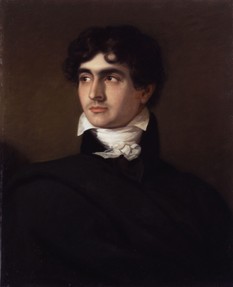 Byron may have given up on vampires, but John Polidori hadn't.
Byron may have given up on vampires, but John Polidori hadn't. 
 The anonymous narrator received a name - Aubrey - and a back-story. The meeting with the strange gentleman came not in a university, but in a drawing room, surrounded by high class society and the implication of royalty.
The anonymous narrator received a name - Aubrey - and a back-story. The meeting with the strange gentleman came not in a university, but in a drawing room, surrounded by high class society and the implication of royalty.


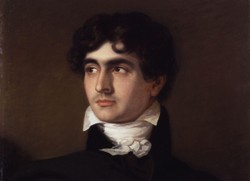

 St Tydecho's Churches in West Waleson 09/03/2014
St Tydecho's Churches in West Waleson 09/03/2014
 Goodies for an Outlander Premiere Partyon 03/06/2015
Goodies for an Outlander Premiere Partyon 03/06/2015
 Holocaust Memorial Day Interview with Rainer Höss, Grandson of Rudolf Architect of Auschwitzon 01/24/2015
Holocaust Memorial Day Interview with Rainer Höss, Grandson of Rudolf Architect of Auschwitzon 01/24/2015
 Romantic Valentine Gifts for an Outlander Fanon 01/16/2015
Romantic Valentine Gifts for an Outlander Fanon 01/16/2015

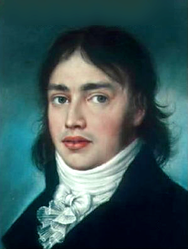
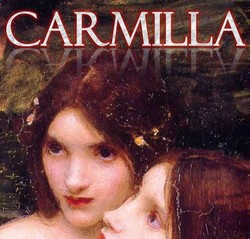
Comments
Just came across this - great re-telling of the Byron/vampire connection....just one correction. The volcano that more or less 'caused' the 'year of no summer' - the cold and rainy 1816 - was Mt Tambora... Krakatoa was in 1886 or thereabout. Otherwise great share!
I'm glad to have shared the juicy details. I get so enthralled by trivia like this, but yes, it's all Byron's fault! Thanks for reading. <3
Excellent post! I had no idea about Byron's connection to the vampire myth, I only knew his poems and incidents from his turbulent (and spicy!) life... Thanks for sharing this, thumbs up!
You're welcome. I'm glad that you liked it.
I love how ideas keep evolving all of the time. However, some stories - like, I'm afraid to say, Twilight - appear to have diluted the rich tradition to the point of being a bit tepid.
A great read, thanks.
What are your thoughts on current vampire literature?
Thank you very much. :)
Superb!